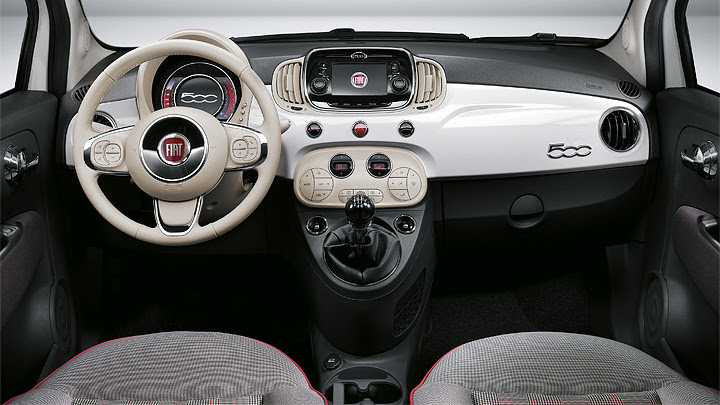
One of the reasons for that is the fact that 500 remained a true supermini. Beetle became a midsize car and Cooper a luxury one, so their overall evolutions were joined by a new price just as huge. So when people left the auto shows and went to the dealers, they ended preferring to spend that kind of money in vehicles with more to offer than pretty, retro design. This is why most North-American attempts failed, why Mini has reworked its lineup, and Volkswagen isn’t delighted with its model. Fiat stood apart because 500 manages to have two personalities: its upscale versions are more than capable of attracting those who want a stylish car, while associating its tiny footprint to more rational variations creates a quite interesting entry-level vehicle.
Having that in mind, it’s easy to understand why the Italians preferred to evolve their model, rather than changing it. Up front, the headlights have new internal design; the auxiliary set became bigger, and now sports LED arches that mimic the zero of the car’s logo; there are more chrome inserts; and the grille uses a new mesh, with exclusive style for the Lounge trim. Going to the rear, the bumper was refreshed, and the main lights were updated in a clever way: they take the same room, in order to avoid changing the sheetmetal, but became rectangular cut-outs with a square in the middle: since the latters are painted in the body color, this duality forms a different contrast with the red lights for each body color available – which are expected to be many.










If those weren’t enough, the big changes lie inside. The dashboard was redesigned to carry the touchscreen through which you can operate FCA’s Uconnect infotainment system. It’ll come as standard, lying between the air vents, but Lounge models get a bigger one with smartphone connectivity. The instrument cluster, in turn, is circular once again and can include a TFT display in the middle to show assorted pieces of driving information. Besides that, there are restyled seats, new cupholders, a new position for the 12-volt socket, and additional soundproofing material on the passenger’s side. Upscale models can also receive a panoramic sunroof and the Second Skin package, which brings new trim style for some items.
When it comes to powertrain, Cinquecento remained pretty much unchanged. At launch, there will be only gasoline engines: the four-cylinder, 69-hp 1.2, the turbocharged, TwinAir 0.9 with 85 hp or 105 hp, and the two-cylinder, 69 hp 1.2. Later, Europeans will be able to choose the latter in the Eco configuration (higher fuel efficiency) and the turbodiesel, 95-hp Multijet II 1.3. The TwinAir makes 26.3 kpl and emits less than 90 g/km of CO2, one more than what the diesel unit emits. There are also a 65-hp version of the TwinAir and a four-cylinder, 100-hp 1.4 dedicated to other markets. After selling more than 1.5 million units since 2007, the new hatchback will go on sale this month, starting with Europe and then going to many other countries.